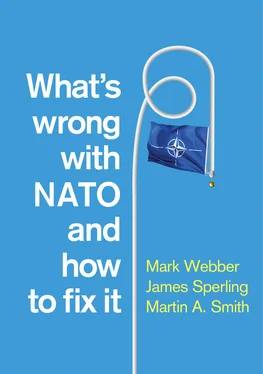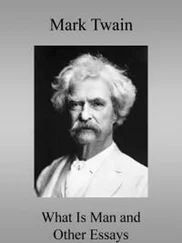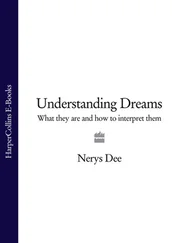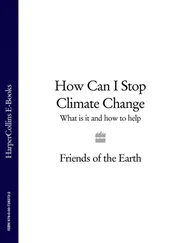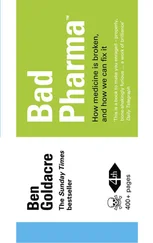NATO also suffers from internal division. Alliance unity or ‘cohesion’, Patricia Weitsman has suggested, is ‘relatively easy to generate and maintain’ where there is ‘a mutual desire to contain a mutual adversary’. 82But NATO no longer has this singular focus. It has taken on more responsibilities and so there are more points of disagreement. The Alliance has also acquired more members, so making the problem worse. Just how bad things have become does need some qualifying. Weitsman points out that NATO has become an alliance that fights. Its missions in Bosnia, Kosovo, Libya and Afghanistan have all occasioned significant internal disagreement: over war aims, variable levels of commitment among the allies and the utility of force. But none of these operations has proven fatal to the Alliance. NATO’s collective resolve has held, and whatever the wisdom of the missions themselves, staying the course ‘suggests’, according to one view, ‘that the Alliance can adapt to difficult circumstances’. 83
In fact, NATO suffers from a more deep-seated politicostrategic problem. As we have seen, post-Cold War threats impinge differently on the allies. NATO has responded to this problem by trying to accommodate as many viewpoints as possible. An expanded agenda, while not optimal for all allies, does at least have the benefit of ‘satisficing’, generating a minimal level of agreement on a shared interest. Further, NATO allies often have powerful secondary reasons for tacking toward security issues that do not affect them directly: a desire to be associated with the US (a factor for many allies who took part in ISAF) or for upholding solidarity as part of a broader commitment to multilateralism and transatlantic relations (one reason for Canadian involvement in NATO’s defence of the Baltic States). But while NATO has a good track record of accommodating division, the problem of fragmentation remains serious. Indeed, in 2017, NATO commissioned a project to study alliance unity, on the assumption that ‘without cohesion’, ‘NATO can and will fail’. Again, the main problem was identified as ‘differential threat assessments’, 84a problem compounded, in turn, by the erosion of liberal democratic values among some NATO allies (Hungary and Turkey most notably). 85Such divisions have had debilitating effects. Defence plans drawn up in 2016 for NATO’s eastern and southern flanks were later blocked by American and Turkish objections. This caused a big row at the 2019 NATO Leaders’ Meeting. As one analyst observed at the time, a failure to ‘retain […] cohesiveness in an environment where threats have proliferated and diversified’ might indeed ‘confirm that NATO is comatose’. 86
Conclusion: Walking and Chewing Gum
NATO has staked its claim to relevance on an expansion of both its membership and agenda. Up to a point, that has worked. The Alliance has adapted rather than ossified and answered the demand for action in the face of multiple challenges. But it has also, as a result, taken on too much. As one official suggested in the margins of the 2014 summit, NATO ‘must be prepared for every challenge the world throws at us’; it must ‘multi-task, while remaining proficient at every task’. 87The intervening years have demonstrated the folly of such ambition. NATO’s position in Afghanistan has gone from bad to worse, its southern strategy has proven irrelevant to the conflicts in Syria and Iraq, and enlargement has foundered over questions of what to do about Georgia and Ukraine. The Alliance has become more impotent and more divided as its range has been extended. On some issues, it might have proven its worth (the military response to Russia’s annexation of Crimea could only have been effected by NATO), but the high tide of allied efficacy has seemingly been reached. If NATO is to avoid a future forever over-promising and underdelivering, it needs to take a hard look at its strengths and weaknesses, and to discriminate between the impossible and the achievable. That is the job of task discretion, a theme we turn to in Chapter 5.
1 1. ‘North Atlantic Council, Declaration on Atlantic Relations’, 19 June 1974, paras 3–4, http://www.nato.int/cps/en/natohq/official_texts_26901.htm.
2 2. Timothy Andrew Sayle, Enduring Alliance: A History of NATO and the Postwar Global Order (Ithaca, NY, and London: Cornell University Press, 2019), pp. 33, 35–6, 47, 50–5, 64.
3 3. ‘Operations and Missions: Past and Present’, https://www.nato.int/cps/en/natohq/topics_52060.htm.
4 4. NATO, ‘The Alliance’s New Strategic Concept’, November 1991, https://www.nato.int/cps/en/natohq/official_texts_23847.htm?.
5 5. NATO, ‘London Declaration Issued by the Heads of State and Government Participating in the Meeting of the North Atlantic Council’, 4 December 2019, https://www.nato.int/cps/en/natohq/official_texts_171584.htm.
6 6. Joanna Spear, ‘Organizational Survival: NATO’s Pragmatic Functionalism’, in Ian Shapiro and Adam Tooze (eds), Charter of the North Atlantic Treaty Organization (New Haven and London: Yale University Press, 2018), p. 283.
7 7. NATO Secretary General, Jens Stoltenberg, address to the United States Congress, 3 April 2019, https://www.nato.int/cps/en/natohq/opinions_165210.htm.
8 8. Anthony King, ‘Overload: Problems of Governing in the 1970s’, Political Studies, 23(2–3), 1975, pp. 162–74.
9 9. Michael E. Brown, ‘Minimalist NATO: A Wise Alliance Knows When to Retrench’, Foreign Affairs, 78(3), 1999, p. 210.
10 10. Beatrice Heuser, oral evidence to the House of Commons Defence Committee, Hearings on ‘The Future of NATO’, Question 83, 12 June 2002, https://publications.parliament.uk/pa/cm200102/cmselect/cmdfence/914/2061207.htm.
11 11. House of Commons Defence Committee, The Future of NATO and European Defence (Ninth Report of Session 2007–8) (London: The Stationery Office, 2008), p. 17.
12 12. ‘Global NATO: Overdue or Overstretch?’, speech at the SDA conference, Brussels, 6 November 2006, https://www.nato.int/docu/speech/2006/s061106a.htm.
13 13. Reynell Andreychuk (rapporteur), ‘Alliance Cohesion’, NATO Parliamentary Assembly, Political Committee, November 2010, p. 5, https://www.nato-pa.int/document/2010-219-pc-10-e-bis-alliance-cohesion-andreychuk-report.
14 14. Jamie Shea, ‘NATO at 70: An Opportunity to Recalibrate’, NATO Review, April 2019, https://www.nato.int/docu/review/articles/2019/04/05/nato-at-70-an-opportunity-to-recalibrate/index.html.
15 15. Sacha Garben, ‘Competence Creep Revisited’, Journal of Common Market Studies, 57(2), 2019, pp. 205–22.
16 16. Michael Barnett and Martha Finnemore, Rules for the World: International Organizations in Global Politics (Ithaca, NY, and London: Cornell University Press, 2004).
17 17. James G. March and Johan P. Olsen, ‘Institutional Perspectives on Political Institutions’, in Michael Hill (ed.), The Policy Process: A Reader (second edition, New York and London: Routledge, 2017), p. 150.
18 18. Ashok Swain, Understanding Emerging Security Challenges: Threats and Opportunities (London and New York: Routledge, 2013), p. 2.
19 19. Michael J. Williams, NATO, Security and Risk Management: From Kosovo to Kandahar (Abingdon: Routledge, 2009).
20 20. James Goldgeier, ‘NATO’s Charter: Adaptable but Limited’, in Shapiro and Tooze (eds.), Charter of the North Atlantic Treaty Organization, pp. 288–301.
21 21. ‘The NATO Command Structure’ (February 2018), https://www.nato.int/nato_static_fl2014/assets/pdf/pdf_2018_02/1802-Factsheet-NATO-Command-Structure_en.pdf.
22 22. Christian Tuschhoff, ‘The Impact of NATO’s Defence Planning and Force Generation on Member States’, in Sebastian Mayer (ed.), NATO’s Post-Cold War Politics: The Changing Provision of Security (Houndmills, Basingstoke, and New York: Palgrave Macmillan, 2014), p. 207.
Читать дальше
